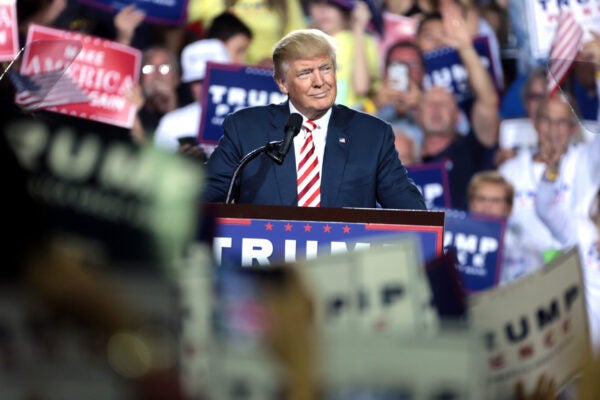AUSTIN, Texas — To many, President Donald Trump’s use of nontraditional, off-the-cuff language seems unlike that of any other politician, but new research on the language of past and present world leaders reveals simple, straightforward messaging that exudes confidence may be the new norm — making Trump a man of his time, rhetorically speaking.
The study, conducted by psychology researchers at The University of Texas at Austin, was published in the Proceedings of the National Academy of Sciences.
“The findings confirm that President Trump and leaders like him did not emerge out of nowhere, but rather are the most recent incarnation of long-term political trends,” said Jamie Pennebaker, UT Austin psychology professor and co-author of the study. “Taken together, the trends suggest that voters may increasingly be drawn to leaders who can make difficult, complex problems easier to understand with intuitive, confident answers.”
For linguists, function words — such as prepositions, pronouns and conjunctions — say a lot about how people think. Prior research has linked high rates of pronouns, negations and auxiliary verbs to low analytic, or more intuitive, thinking. And the heavy use of the pronouns “you” and “we” has been shown to indicate higher status, confidence or clout than the use of impersonal pronouns or “I” and “me.”
Using the text analysis program Linguistic Inquiry and Word Count, developed by Pennebaker, researchers measured the evolution of analytic thinking and clout in presidential language since 1789, focusing on the use of function words in past inaugural addresses, public papers, debates and speeches.
Researchers found that analytic thinking remained high throughout the 18th and 19th centuries but began declining around the time of Woodrow Wilson’s presidency. And, by the time Dwight Eisenhower took office in the 1950s, presidential language had struck a new tone of confidence. Mapping this, researchers determined Trump only deviated from the trend in one setting — debates, where his speech was less analytic than that of any previous president.
“Donald Trump was, by and large, not an outlier, psychometrically speaking,” said the study’s lead author, Kayla Jordan, a psychology doctoral candidate at UT Austin. (Pyschometrics is the science of measuring mental capacities and processes.) “These results strongly suggest that the recipe that likely helped Trump become a successful presidential candidate was set in motion almost 100 years ago.”
Researchers also examined the language of other English-speaking world leaders. They found that low analytic thinking and high clout have also become more common in Canada and Australia. British leaders have maintained higher analytic measures, but evidence shows their language, too, has begun to convey more confidence. Although these trends are similar to those seen in the U.S., they developed later, around the 1980s, researcher said.
“The results from non-American leaders provide evidence that the simple, confident rhetorical style observed in recent American presidents is an increasingly important marker of leadership globally,” said Ryan Boyd, a co-author and psychology postdoctoral researcher at UT Austin.
To understand whether this was simply a political phenomenon or a reflection of the broader culture, researchers compared these trends with language used in novels, movies, CNN daily transcripts and New York Times articles. However, outside of the language used on CNN, no correlation was detected. Researchers speculated this exception was due to the network’s focus on communicating politics to the masses.
Note to Editors: Journalists can directly access the article through EurekAlert: https://www.eurekalert.org/emb_releases/2019-02/potn-cto020619.php
Header image: Donald Trump at a campaign rally in Prescott Valley, Arizona. Photo by Gage Skidmore, Flickr.




